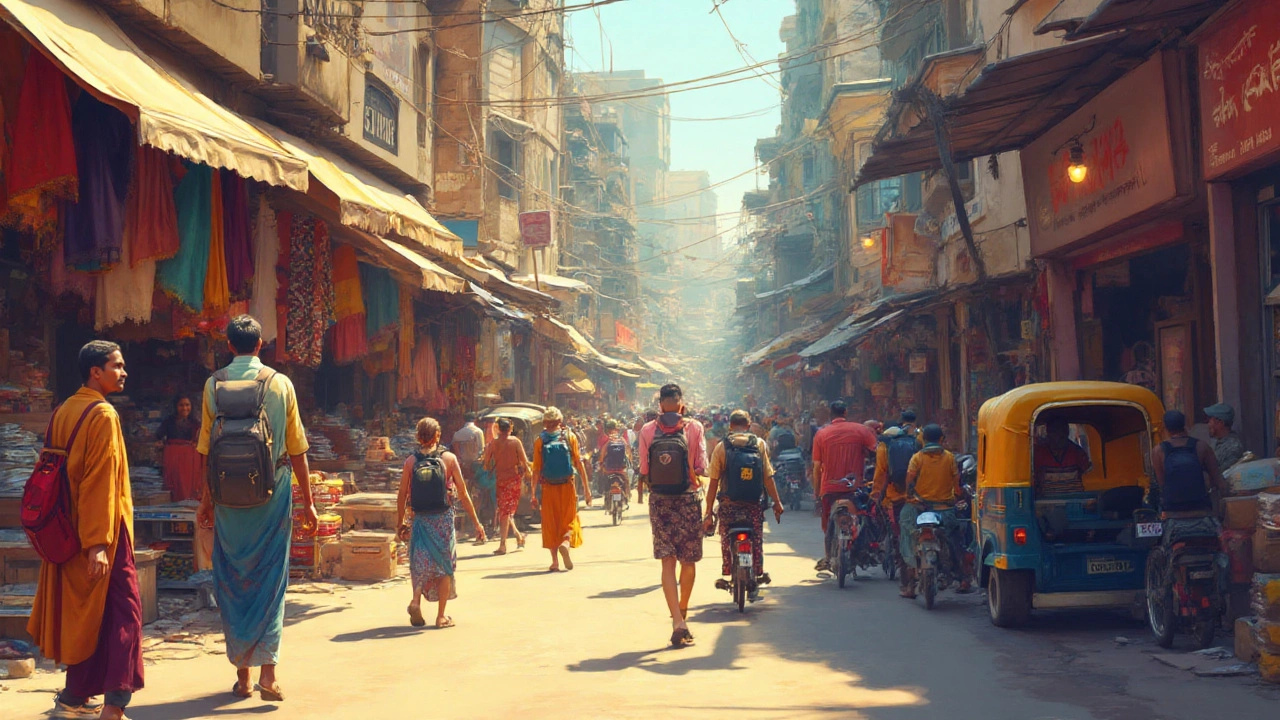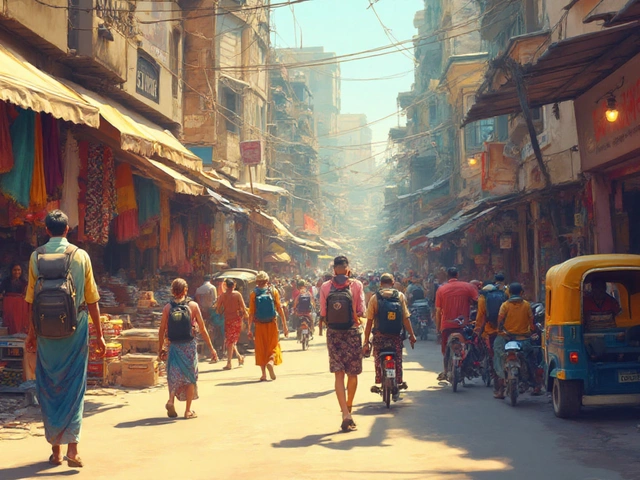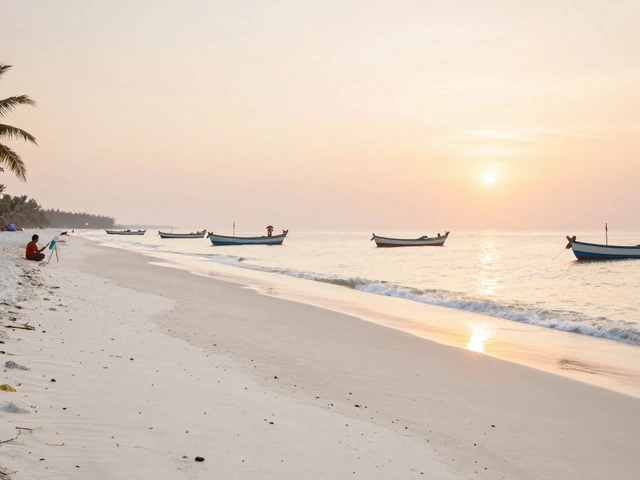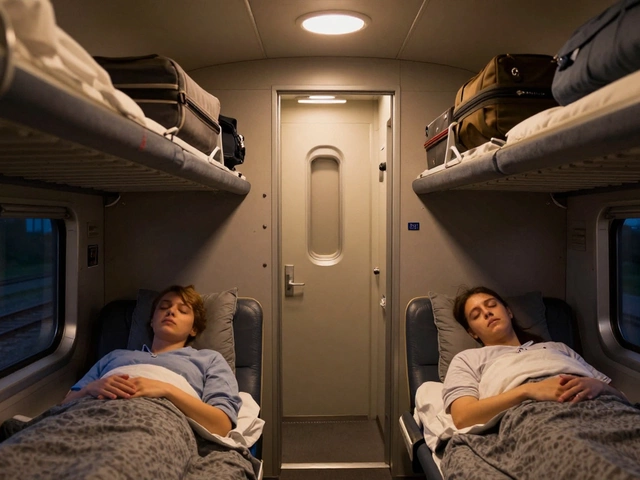Ever looked at stunning photos of Rajasthan’s palaces or Kerala’s backwaters and wondered if you’d ever make it there? Most folks Google “How much does a trip to India cost?” and get answers ranging from shoestring backpacker tales to stories of wild luxury. But here’s the truth: India can be as cheap or as expensive as you make it. The kicker? Nearly 11 million tourists visited India in 2023, according to India’s Ministry of Tourism, with wildly different budgets. So how much should you save for your India trip? It all depends on your style, timing, and where you want your rupees to work their magic. Let’s dig into the real numbers, smart hacks, and honest advice you won’t find on cookie-cutter travel blogs.
Breaking Down Real India Trip Costs: Accommodation, Food, and Transport
Thinking of slumming it in a hostel with fellow backpackers in Goa? Or maybe you’ve been eyeing that five-star tented camp in Rajasthan for your Instagram feed. Either way, India doesn’t fit neatly into a single budget box. Here’s what you’re actually looking at when it comes to daily expenses.
| Expense | Budget (INR/USD per day) | Mid-range (INR/USD per day) | Luxury (INR/USD per day) |
|---|---|---|---|
| Accommodation | 700–1,200 / $8–15 | 3,000–6,000 / $35–70 | 10,000+ / $120+ |
| Food | 200–500 / $2.5–6 | 900–2,000 / $11–25 | 4,000+ / $48+ |
| Transportation | 400–800 / $5–10 | 1,500–3,500 / $18–42 | 6,000+ / $72+ |
| Attractions / Tours | 300–600 / $4–7 | 1,500–3,000 / $18–36 | 6,000+ / $72+ |
| Miscellaneous | 200 / $2.5 | 500 / $6 | 2,000+ / $24+ |
If you love math, here’s a quick calculation: For a 2-week trip, budget travelers can manage on about $400–$500 (excluding flights), mid-range folks should plan for $1,400–$2,000, and if you want all the bells and whistles, set aside $4,000 or more. These costs hold up in 2025, give or take a little for currency swings and inflation. Now, flights are another story. Round-trip fares from the US or Europe to India vary wildly—expect to pay anywhere from $700 to $1,500 in economy if you book 2–3 months in advance. Keep an eye on deals from major carriers like Emirates, Qatar Airways, or Air India.
Don’t forget the little extras: Indian rail tickets cost as little as $2 for a sleeper berth (Delhi to Agra), while an air-conditioned train seat may run you $15–30. Domestic flights between major cities (say, Delhi to Mumbai) can be under $50 one-way if you book ahead. As for meals, you can scarf down a flavorful masala dosa for less than $1 at a local eatery, but splurge on a multicourse lunch at legendary Bukhara in Delhi and you could drop $60 in a heartbeat.
If you’re hunting for bargains, travel in off-peak months like May–September. Prices for hotels in North India dip by up to 40%. And if you’ve ever dreamed about a palace stay, you’d be shocked how affordable some heritage hotels become outside peak season—think $100 a night for a room that once hosted royals.
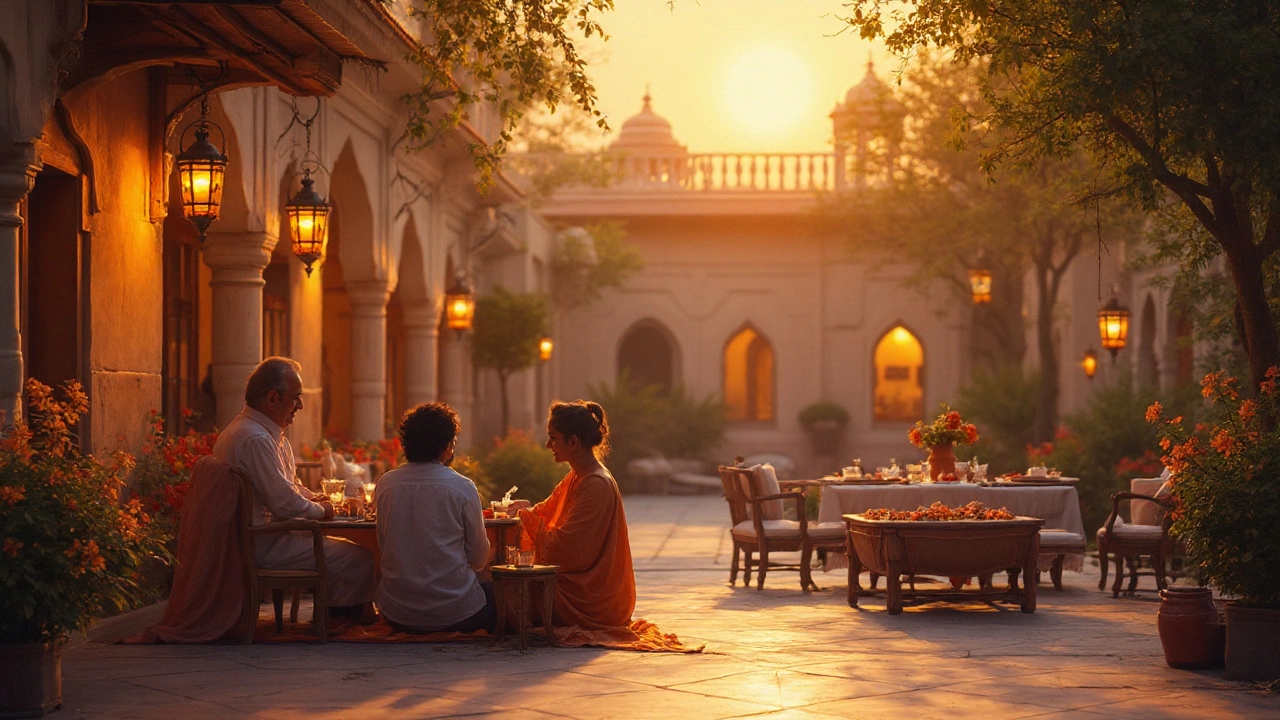
The Hidden Costs You Didn’t See Coming
Everyone tallies up airfare and hotels, but India throws in surprises. Don’t get caught by fees that creep up. Visas, for example: as of 2025, most travelers need an e-Tourist visa, costing $40–80 depending on your nationality and length of stay. Processing is straightforward and rarely takes more than a few days, but don’t apply last minute, because changes in visa rules happen almost every year.
Travel insurance is another must. It’s not only about protecting valuables—street food, tuk-tuks, and India’s sometimes tangled traffic can result in unexpected mishaps. Solid global coverage usually runs $60–100 for a 2-week trip. Aim for policies covering medical emergencies, lost belongings, and trip delays. Without insurance, even a minor hospital visit can cost $150 or more, depending on where you land.
Next up, local SIM cards. Free Wi-Fi sounds great, but reliability’s another story. Pop into the airport or major cell shops and grab a prepaid SIM for about $5–10. That typically gets you enough data and calls for the whole trip. You’ll need your passport and a quick photo, so don’t leave them buried in your pack.
Cabs and rideshares like Uber or Ola make getting around big cities easy, but watch for surge pricing during festivals or monsoons. Taxis from Delhi Airport to the city can range from $5–10 at popular times, but always confirm the fare first. In smaller towns, expect hard bargaining or ask your hotel for help.
What about laundry and tipping? Most guesthouses and hotels offer basic laundry for $0.50–1 per item. Street vendors expect tips when loading luggage or helping out, but it’s always nominal: $0.25–0.50 is enough for small services. In restaurants, locals tip around 10% if service isn’t already included, and drivers usually appreciate a few coins for longer hauls.
Then there’s the lure of shopping. Markets in Jaipur and Delhi will tempt you with silk scarves, handwoven carpets, and silver jewelry. Haggling is half the fun! Plan a separate budget—maybe $50–200 for souvenirs. High-quality buys like Kashmiri shawls or sandalwood carvings can run much higher, so decide what’s worth it before you get caught in the whirl.
Other unexpected costs? Entry fees to major sights keep creeping up. The Taj Mahal, for instance, now charges foreigners around $15, while most city palaces and forts charge $4–10. If you’re traveling with a student ID, whip it out—you might snag a 25–50% discount at some attractions. It helps to check the official ticketing sites, as some only accept online payments now.

Smart Tips to Stretch Your Cash in India
You don’t need to scrimp every rupee to enjoy India, but a bit of strategy helps you see more without feeling deprived. First, public transport is your friend—local buses, metro systems (Delhi and Mumbai have excellent ones), and even cycle-rickshaws give you a real slice of life for pocket change. An all-day Delhi Metro pass? Less than $2, and it’s safe, clean, and air-conditioned.
Hostel culture has exploded across India’s cities and many hill stations. Chains like Zostel and goSTOPS bring backpacker vibes, Wi-Fi, and free chai for $7–12 a night. Tripadvisor and Hostelworld reviews are your best guide—look for high ratings and “female friendly” tags if you’re traveling solo.
If you’re craving private rooms, homestays let you connect with locals, sometimes including home-cooked meals. The costs swing wildly, but you’ll often score a lovely room and meals for $20–30 a night. Airbnb’s also grown in India, and while the selection isn’t as massive as in Europe, you’ll find everything from Mumbai apartments to treehouses in Kerala. Just check reviews closely.
Food doesn’t have to drain your wallet. Street eats are delicious and safe if you watch where locals queue up. Hot samosas, dosas, fresh lassis, and more for under $1. If you’re concerned about hygiene, stick to busy stalls and avoid anything lukewarm. Sit-down restaurants in touristy zones tend to overcharge, so ask locals for their favorite eats. Apps like Zomato and Swiggy make takeout easy and let you scope out menus and prices before you sit down.
For major savings on attractions, look into bundled tickets, especially in Rajasthan and Delhi, where tourist offices offer passes to forts, palaces, and museums. Students and teachers frequently get steep discounts, as do kids (carry ID). And if you’re planning major sightseeing days, start early—crowds are lighter, and you can beat the midday heat.
Book trains and buses yourself whenever you can. Indians use IRCTC (the official rail site) and apps like RedBus. If you’re daunted by Indian railways, pay a local travel agent a tiny fee (usually $2–5) to arrange tickets. Same goes for domestic flights—clear your browser cookies to avoid price jumps and look for flash sales. Sometimes, last-minute bookings are cheaper, but during major festivals like Diwali or Holi, everything fills fast.
Water is a place to be careful: don’t drink from the tap, ever. Buy large bottles at supermarkets if you want to save; better yet, bring a portable filter bottle and refill on the go. It saves cash and plastic waste. And don’t forget basic travel health: carry rehydration salts and over-the-counter stomach remedies, just in case the street food hits back harder than you expected.
If you’re traveling long-term, cash goes further when you avoid touristy states around high season. Places like Madhya Pradesh, Odisha, and the Northeast are still off most travelers’ radar, so prices for food and rooms are a fraction of costs in Goa or Rajasthan. Bonus: you’ll get bragging rights for exploring India beyond the classic "Golden Triangle."
Finally, always keep an eye on your ATM withdrawals. Indian banks charge foreign cards a flat fee (often $2–4 per transaction), so it’s smarter to pull out larger amounts less often. Many shops now take international cards, but always keep cash for smaller places—especially when you need to pay for chai in the middle of nowhere, or tip the rickshaw driver after a wild ride.
So when someone asks you, How much should you save for a trip to India?—you’ve got real numbers, not guesswork. Whether you’re living on $20 a day or splurging on maharaja suites, it comes down to your choices, timing, and a dose of flexibility. India rewards the curious and adventurous, no matter the budget.
